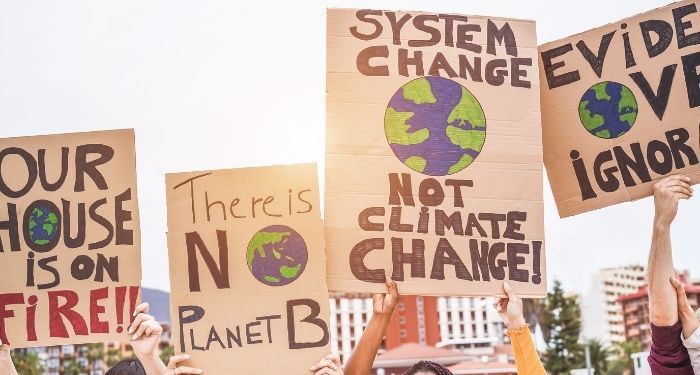Environmental book clubs have been on a steady rise for the last few years. They weren’t something I ever came across until the last five or so years, although they were by no means nonexistent before. But a coalition of circumstances, both disparate and related, has paved the way for book clubs focused on the environment to thrive.
The Context
While researching for this piece, I had the opportunity to have a talk with climate journalist Tais Gadea Lara. Gadea Lara, a 2021 Hammarskjöld Fund and 2017 International Center for Journalists (ICFJ) fellow, co-founded the Club de Lectura Climática (Climate Reading Club) in 2020. During a conversation with science journalist Martín de Ambrosio, they came up with the idea for a book club “in which, through literature on climate change, people reflect and take action.”
Gadea Lara pinpoints the Youth Climate Movement, led by Greta Thunberg, as a turning point for public interest in the environment, specifically climate. Although there was a rich history of climate activism before it, this seemed to make a deep impression in the audience. Furthermore, the beginning of the COVID-19 pandemic soon after, with its subsequent lockdowns and social distancing, meant that more people now had the time to devote to topics of interest. As Gadea Lara puts it, “the confinement due to the pandemic forced us all to reflect on these essential topics.”
An Environmental Book Club in Action
The numbers agree, reflecting the growing public interest in the environment, its beauties and the dangers it’s facing: the virtual Environmental Book Club has 2387 followers on Instagram (@envirobookclub) and 482 members on Goodreads. In the introductions message board on Goodreads, co-founder Fran Haddock mentions that they “initially thought it would just be a small group of maybe 6-8 of us but it was quickly apparent the interest was much more!”
Gadeas Lara and de Ambrosio were faced with the same situation: the interest from their audience was far larger than they expected. They eventually had to limit the number of members, as they both agree on the importance of manageable groups to foster discussions — a too large group of people means that a percentage of them will be left unheard. And the discussion is the point: she mentions that due to the pandemic, “my international trips were cancelled, but I needed to converse with others about these concerns.”
It is through discussion that ideas coalesce, and action begins to take place. Ultimately, action is the goal of an environmental book club is always to inform in order to transform. Gadeas Lara points out that every book is a starting point, that it should “inform to raise awareness and trigger action.”
Coming Together
The origin stories of these book clubs might look different on the outside, but they come down to the same thing: people needing to talk about their interest in, and concern for, the environment with others. That’s how the Environmental Book Club was formed: “This book club started as a collaborative idea to create a virtual environmental book club between Fran and Adrienne who found each other through the Instagram eco-community — even though they live on the opposite side of the world to each other!”
Do the members of environmental book clubs have anything in common beyond this need? According to Gadeas Lara, not much: the Club de Lectura Climática has members who practice different professions, who are different ages and belong to diverse communities. The only other commonality a lot of them seem to share is a desire to reconnect with books, to once again get in the habit of reading.
What are Environmental Book Clubs Reading?
The question may seem silly. Books about the environment, of course. But what is the criteria to determine which books are read? How are the discussions handled? That changes depending on the book club in question: those led by experts, like Club de Lectura Climática or the Climate Reality Book Club, make sure that science is the common thread. Gadeas Lara remarks that “climate science must guide every discussion.” The co-founders of the Environmental Book Club focus on books about “the intersectional issues facing our planet and population (…)”
Because that’s what it comes down to: at the end of the day, it’s impossible to read about the environment without simultaneously reading about humanity. The two are so intrinsically linked that one must affect, and be affected by, the other. This is why, although Club de Lectura Climática is ostensibly only about climate, they are reading about the refugee crisis, about global nutrition, about people. Environmental book clubs may seem like a niche type of book club, but they’re not. One might argue quite the opposite: they’re the most global type of book club there is.
